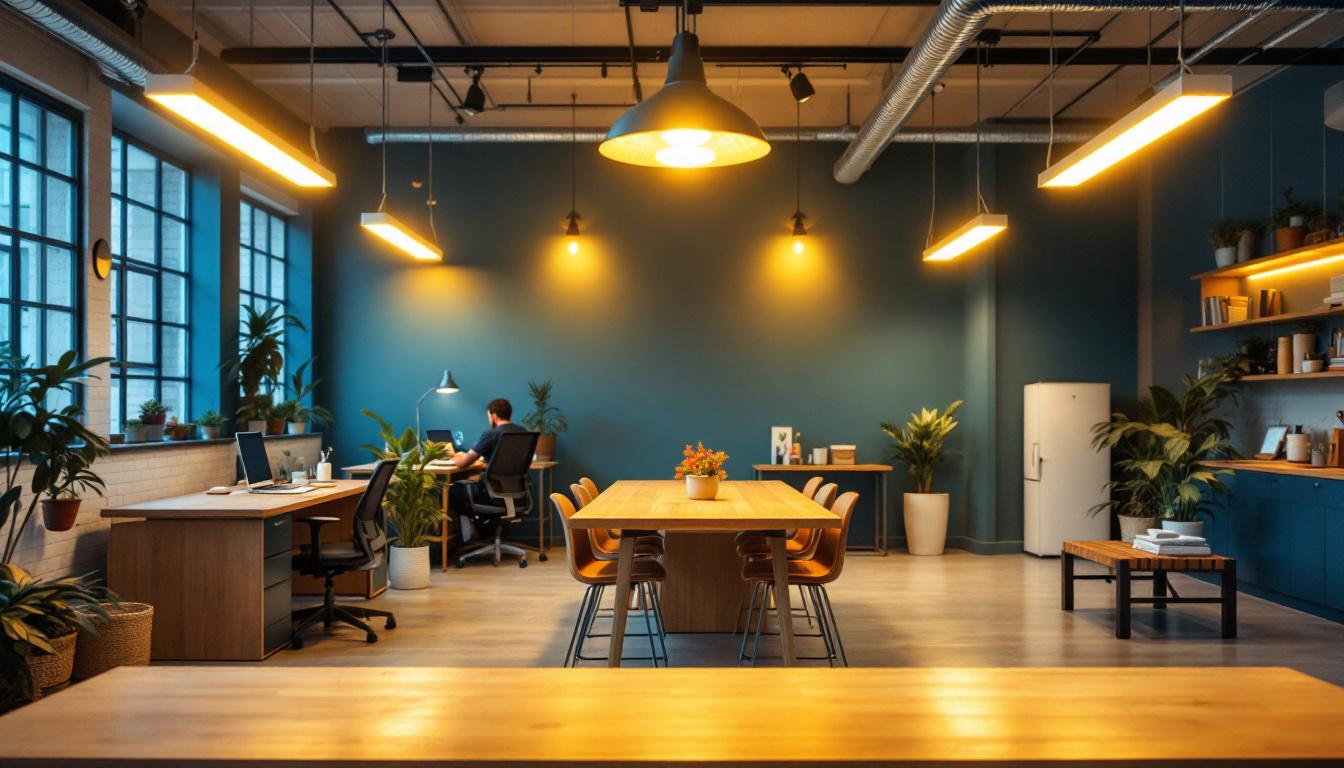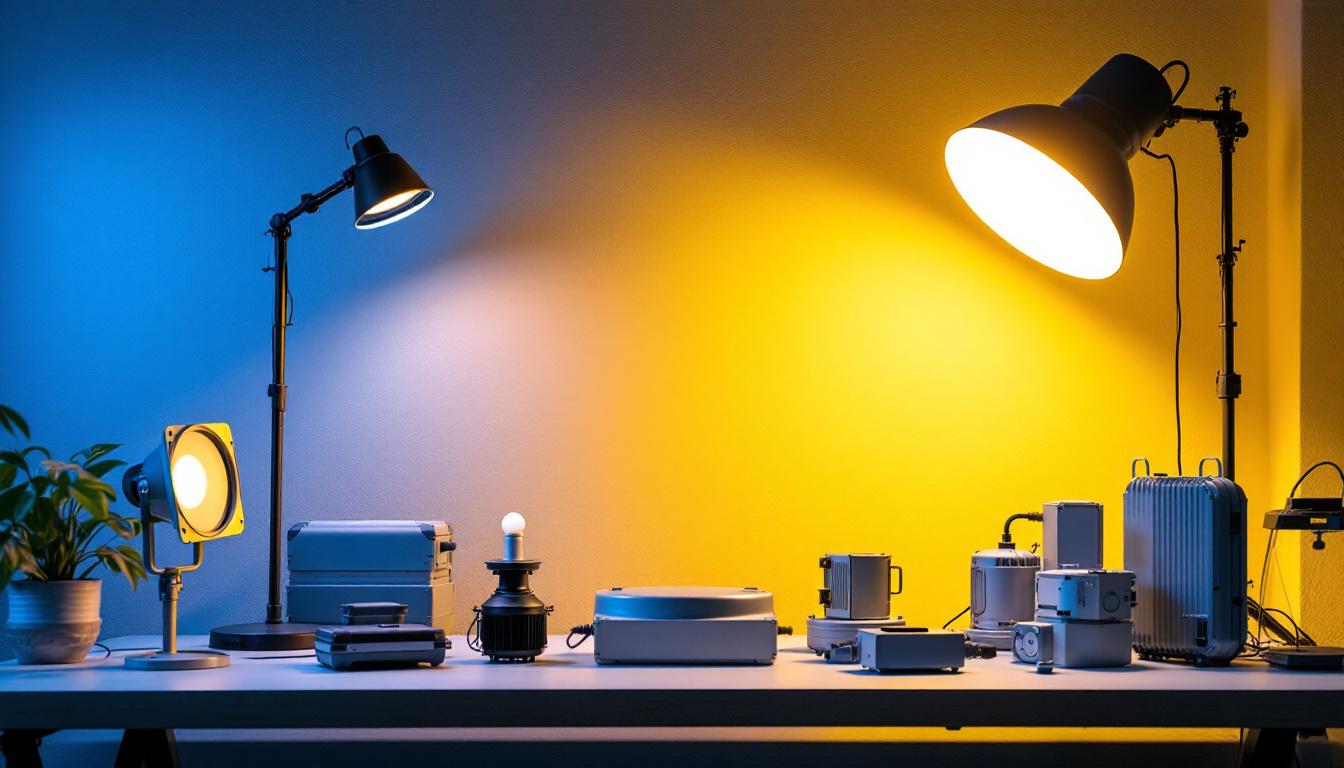
In the ever-evolving world of lighting technology, energy efficiency has become a paramount consideration for lighting contractors. With rising energy costs and increasing environmental concerns, the demand for energy-efficient lighting solutions continues to grow. Understanding the various types of lighting available and their energy consumption is essential for contractors who aim to provide the best solutions for their clients. This article delves into the most energy-efficient lighting options, providing proven methods that can benefit both contractors and their customers.
Energy efficiency in lighting refers to the amount of light produced per unit of energy consumed. This is typically measured in lumens per watt (lm/W). The higher the lumens produced for each watt consumed, the more energy-efficient the lighting source is considered. As a contractor, it’s crucial to grasp this concept to make informed recommendations to clients. By prioritizing energy-efficient lighting solutions, contractors not only help clients reduce their energy bills but also contribute to a more sustainable environment by lowering overall energy consumption.
When discussing energy efficiency, lumens and watts are two key terms that every lighting contractor should understand. Lumens measure the brightness of a light source, while watts measure the energy consumed. A light source that produces more lumens for fewer watts is deemed more efficient. For instance, LED lights typically provide more lumens per watt compared to traditional incandescent bulbs, making them a more energy-efficient choice. Additionally, advancements in lighting technology have led to the development of smart lighting systems, which can further enhance energy efficiency by allowing users to control brightness and scheduling through mobile applications or voice commands, optimizing energy consumption based on actual needs.
Several factors can influence the energy efficiency of lighting systems. These include the type of light source, the design of the lighting system, and the application of the lighting. For example, the placement of fixtures, the use of reflectors, and the overall design of the space can all impact how effectively light is distributed and utilized. Understanding these factors allows contractors to optimize lighting solutions for their clients. Furthermore, the color temperature of the light source can also play a significant role in energy efficiency and user satisfaction. Warmer light temperatures may create a cozy atmosphere in residential settings, while cooler temperatures are often preferred in commercial spaces for their ability to enhance focus and productivity. By considering these aspects, contractors can tailor their recommendations to meet both aesthetic preferences and energy-saving goals.
As lighting technology has advanced, several energy-efficient options have emerged. Each type has its advantages and applications, making it essential for contractors to be familiar with them.
Light Emitting Diodes (LEDs) have rapidly gained popularity in the lighting industry due to their remarkable energy efficiency. LEDs can produce up to 100 lumens per watt or more, significantly outperforming traditional incandescent bulbs, which typically provide around 15 lumens per watt.
In addition to their efficiency, LEDs have a longer lifespan, often lasting up to 25,000 hours or more. This longevity not only reduces replacement costs but also minimizes waste, making LEDs an environmentally friendly choice. Furthermore, advancements in LED technology have led to improved color rendering and dimming capabilities, making them suitable for a variety of applications, from residential to commercial settings. The versatility of LEDs allows them to be used in everything from outdoor floodlights to intricate chandeliers, catering to diverse aesthetic preferences and functional needs.
Moreover, the introduction of smart LED technology has revolutionized how we interact with lighting. Smart LEDs can be controlled remotely through smartphones or home automation systems, allowing users to adjust brightness, color temperature, and even set schedules for when lights turn on or off. This not only enhances convenience but also contributes to energy savings by ensuring lights are only used when needed.
Compact Fluorescent Lamps (CFLs) are another energy-efficient option that has been around for some time. These bulbs use about 70% less energy than incandescent bulbs and can last up to 10 times longer. CFLs work by passing an electric current through a gas-filled tube, producing ultraviolet light that excites a fluorescent coating inside the bulb, resulting in visible light.
While CFLs are more efficient than traditional bulbs, they do have some drawbacks. They can take a moment to reach full brightness and may not be suitable for all fixtures, especially those with dimming capabilities. However, they remain a viable option for many applications, particularly where initial costs are a concern. Additionally, CFLs are available in various shapes and sizes, making them adaptable for different lighting fixtures, from table lamps to ceiling fixtures.
Another important consideration with CFLs is their environmental impact. While they are more energy-efficient, they do contain a small amount of mercury, which requires careful disposal to prevent environmental contamination. Many municipalities offer recycling programs specifically for CFLs, helping to mitigate this issue and promote sustainable practices among consumers.
Halogen bulbs are a type of incandescent lighting that has been modified to improve efficiency. They contain a small amount of halogen gas, which allows the bulb to operate at a higher temperature, producing more light per watt than standard incandescent bulbs. While halogen lights are more efficient than traditional options, they still fall short of the performance levels of LEDs and CFLs.
Halogen bulbs are often favored for their ability to produce high-quality light and their compatibility with dimmers. They are commonly used in track lighting and accent lighting applications, where precise control over brightness is essential. However, contractors should consider the higher energy consumption compared to LED options when recommending halogen lighting. The warm light produced by halogen bulbs is often preferred in settings where ambiance is key, such as restaurants or galleries, where the quality of light can significantly affect the overall atmosphere.
Additionally, halogen bulbs are available in various shapes and sizes, making them suitable for a wide range of applications. Their compact design allows for use in smaller fixtures, and they can often be found in both standard and specialty configurations. Despite their higher energy consumption, the immediate availability of light and the ability to dim them make halogen bulbs a popular choice for many consumers looking for a balance between efficiency and quality.
Choosing the right type of lighting is just one aspect of achieving energy efficiency. Implementing proven methods can further enhance the effectiveness of lighting systems, leading to significant energy savings.
Integrating smart lighting controls into a lighting system can greatly enhance energy efficiency. These controls allow for automated adjustments based on occupancy, daylight availability, and time of day. For instance, motion sensors can turn lights off when a room is unoccupied, while daylight sensors can dim or turn off lights when natural light is sufficient.
Smart lighting systems can be programmed to adapt to the needs of the space, ensuring that energy is only used when necessary. This not only reduces energy consumption but also extends the lifespan of the lighting fixtures, leading to lower maintenance costs for clients.
Proper fixture placement is crucial for maximizing the efficiency of a lighting system. Contractors should consider the layout of the space and the intended use of the lighting. For example, in a commercial setting, task lighting should be strategically placed to illuminate work areas without wasting energy on unnecessary illumination.
Additionally, using reflectors and diffusers can help distribute light more evenly throughout a space, reducing the need for additional fixtures. By optimizing fixture placement, contractors can enhance the overall efficiency of the lighting system while meeting the specific needs of their clients.
Regular maintenance of lighting systems is essential for ensuring continued energy efficiency. Dust and dirt can accumulate on fixtures and lenses, reducing light output and forcing systems to work harder than necessary. Contractors should encourage clients to establish a maintenance schedule that includes cleaning fixtures, replacing burnt-out bulbs with energy-efficient options, and checking for any issues that may affect performance.
By prioritizing maintenance, clients can enjoy sustained energy savings and improved lighting quality over time. This not only enhances the client’s experience but also reinforces the contractor’s commitment to providing high-quality service.
In many regions, energy codes and standards dictate the minimum efficiency requirements for lighting systems. These regulations are designed to promote energy conservation and reduce environmental impact. As a lighting contractor, staying informed about local codes is essential for compliance and ensuring that clients receive the most efficient solutions.
Familiarity with local energy codes can help contractors navigate the complexities of lighting installations. These regulations often specify requirements for wattage limits, fixture types, and efficiency ratings. By understanding these codes, contractors can provide clients with compliant solutions that meet their energy efficiency goals.
Moreover, being knowledgeable about local regulations can enhance a contractor’s reputation as a reliable and informed professional, ultimately leading to increased client trust and satisfaction.
Energy Star is a widely recognized certification program that identifies energy-efficient products, including lighting fixtures. Incorporating Energy Star-rated products into lighting designs can help contractors ensure that their clients are investing in high-quality, efficient solutions. These products are tested and verified to meet strict energy efficiency guidelines, offering peace of mind to both contractors and clients.
Promoting Energy Star products can also serve as a selling point for contractors, as clients increasingly seek environmentally friendly options. By aligning with recognized standards, contractors can position themselves as leaders in energy-efficient lighting solutions.
The landscape of lighting technology is continuously changing, with innovations that promise even greater energy efficiency. As a lighting contractor, staying informed about the latest advancements and best practices is essential for providing clients with the most effective solutions.
By understanding the various types of energy-efficient lighting, implementing proven methods, and adhering to local regulations, contractors can enhance their service offerings and contribute to a more sustainable future. The transition to energy-efficient lighting is not just a trend; it is a necessity that benefits clients, contractors, and the environment alike.
In conclusion, the most energy-efficient lighting solutions are those that combine advanced technology, smart design, and a commitment to sustainable practices. By embracing these principles, lighting contractors can lead the way in creating brighter, more efficient spaces for all.
Ready to elevate your lighting game and deliver unparalleled value to your clients? Look no further than LumenWholesale for all your energy-efficient lighting needs. Our extensive selection of spec-grade lighting products is designed to meet the highest industry standards, ensuring you provide reliable and high-performance solutions for every project. With unbeatable wholesale prices and the convenience of free shipping on bulk orders, you can trust LumenWholesale to supply premium lighting without the hidden fees. Don’t compromise on quality or affordability. Discover wholesale lighting at the best value today and brighten your projects with confidence.

Discover expert insights and best practices for installing 8-foot shop lights in this comprehensive guide tailored for lighting contractors.

Discover effective cost-saving strategies for lighting contractors with the use of 0-10V dimmer switches.

Discover how a ballast can transform your lighting projects by enhancing efficiency and performance.

Discover why LED lamps are essential for transforming your garage into a well-lit, efficient workspace.